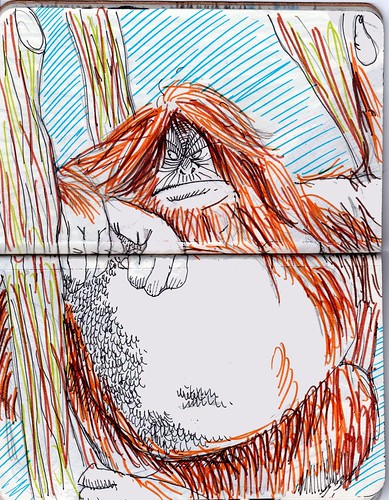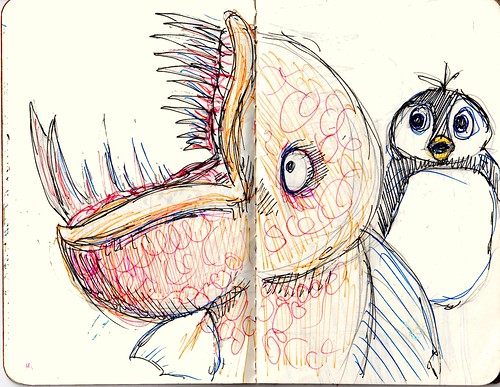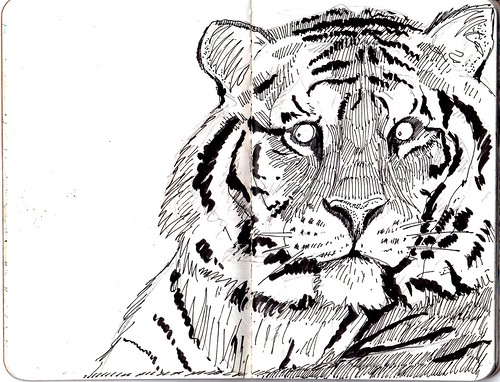Willems, it turns out, is closely associated with Sesame Street, has won tonnes of awards (Caldecott, Carnegie) and has written lots of stuff. He has a good ear for simple dialogue, a smart sense of humour with sufficient appeal to adults to get you through inevitable multiple-readings-in-a-row and finds great expressive range in a deceptively plain-looking drawing style.
 |
| If you own copyright to this and want me to remove it - just let me know! |
After the pigeon book, we graduated to 'Knuffle Bunny', the traumatic tale of a goggle-eyed girl called Trixie and her lost stuffed toy, and included 'Time to Pee' in our potty-training: it comes with mouse stickers, an excellent incentive (or 'bribe') for successful toilet-action. And recently we've acquired 'Knuffle Bunny Too', a sequel including the excellent (and, for us, resonant) line: 'Daddy tried to explain what 2.30am means'. Our children have taken to the iPad (in strictly controlled increments) and 'Don't Let the Pigeon Run this App' has been a great success: it is one of the few genuinely interactive apps for kids out there, allowing children to generate their own story by recording words that become incorporated into the narrative. Then, of course, they get to shout 'No!' a lot too. And there are still lots of books by him that we haven't got around to you.
Anyhoo, I mention all this because Willem's pigeon sprung immediately into mind when my friend, the historian CabinetRoom101 posted this picture of Monet and his wife on his twitter feed:
Anyhoo, I mention all this because Willem's pigeon sprung immediately into mind when my friend, the historian CabinetRoom101 posted this picture of Monet and his wife on his twitter feed:
(I'm pretty sure he found it on the excellent Retronaut site.) Having posted a jokey tweet, I had to explain to CabinetRoom101, or Tim, as I prefer to call him, what I was talking about and then I couldn't resist a little doctoring. I meant to stop here:
But got carried away and wound up producing this:
Willems, I think, uses Adobe Illustrator or some such to produce the clever mixture of flat shapes and carefully scrappy lines, but I knocked this up on my iPad and then put it together using Pixelmator, so it's a bit rough in places.
Post Script: this is The Pigeon as drawn by my son, using the iPad app (heartless cynics, get stuffed):
*Other pleasures include, of course, that vicarious vampiric relish in your child's delight in story and the re-discovery of old favourites (hello Mr Gumpy! The tiger drank all of daddy's beer??)
** Other discoveries include the amazing Emily Gravett and Polly Dunbar (I love Penguin).
























